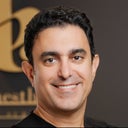Have you ever heard of a brow lift where the brow is suspended by drilling into the underlying bone? I would like a lateral brow lift from a temporal approach but do not want endotines. Is drilling into the bone at the brow safe? It seems like it would increase the risk of nerve damage. And is there a way to remove excess forehead skin from the temporal approach? How would you lift the lateral brow if you weren't using endotines or a coronal technique? The transbleph browpexy did not hold up for me.
Answers (8)
From board-certified doctors and trusted medical professionals
Dr. A.J. Amadi, MD

Dr. A.J. Amadi, MD
Oculoplastic Surgeon, Board Certified in Ophthalmology
Answer
Dr. Donn R. Chatham, MD

Dr. Donn R. Chatham, MD
Board Certified Facial Plastic Surgeon
Answer
Dr. Toby Mayer, MD

Dr. Toby Mayer, MD
Board Certified Facial Plastic Surgeon
Answer
Dr. Andrew Pichler, MD
Dr. Andrew Pichler, MD
Board Certified Facial Plastic Surgeon
Answer
Dr. David V. Martini, MD
Dr. David V. Martini, MD
Board Certified Facial Plastic Surgeon
Answer
Dr. Christopher L. Hess, MD
Dr. Christopher L. Hess, MD
Board Certified Plastic Surgeon
Answer
Dr. Stephen Weber MD, FACS
Dr. Stephen Weber MD, FACS
Board Certified Facial Plastic Surgeon
Answer
Dr. Francis R. Palmer, III, MD (retired)
Dr. Francis R. Palmer, III, MD (retired)
Board Certified Facial Plastic Surgeon
Answer
More Brow Lift Questions
See all Brow Lift Q&AWE SEND PRETTY
EMAILS
What’s trending? Who’s turning heads? Which TikTok myths need busting? We’ve got you. No fluff, no gatekeeping—just real talk. Get our free, unfiltered newsletter.